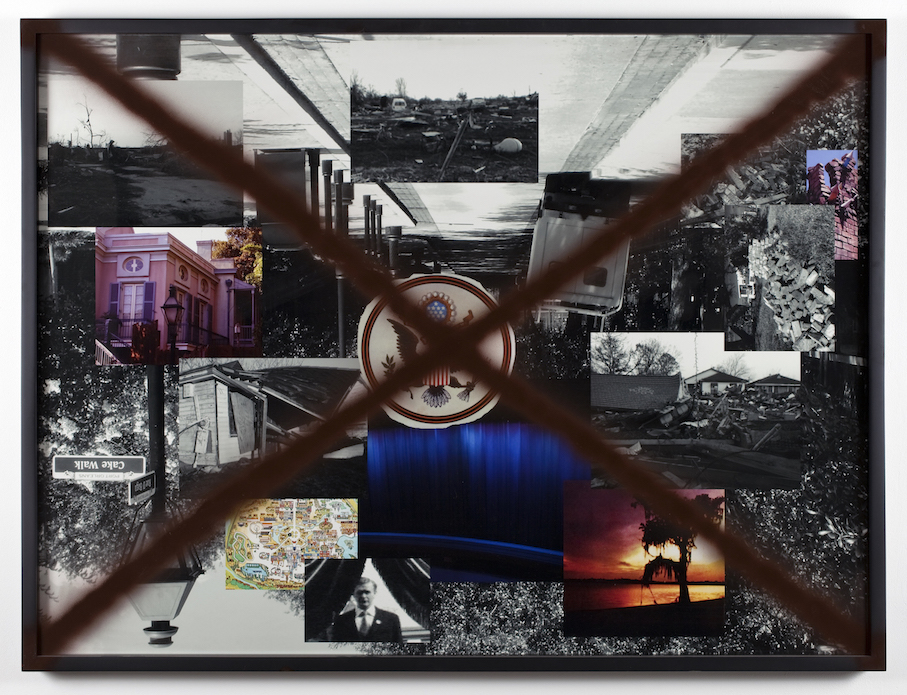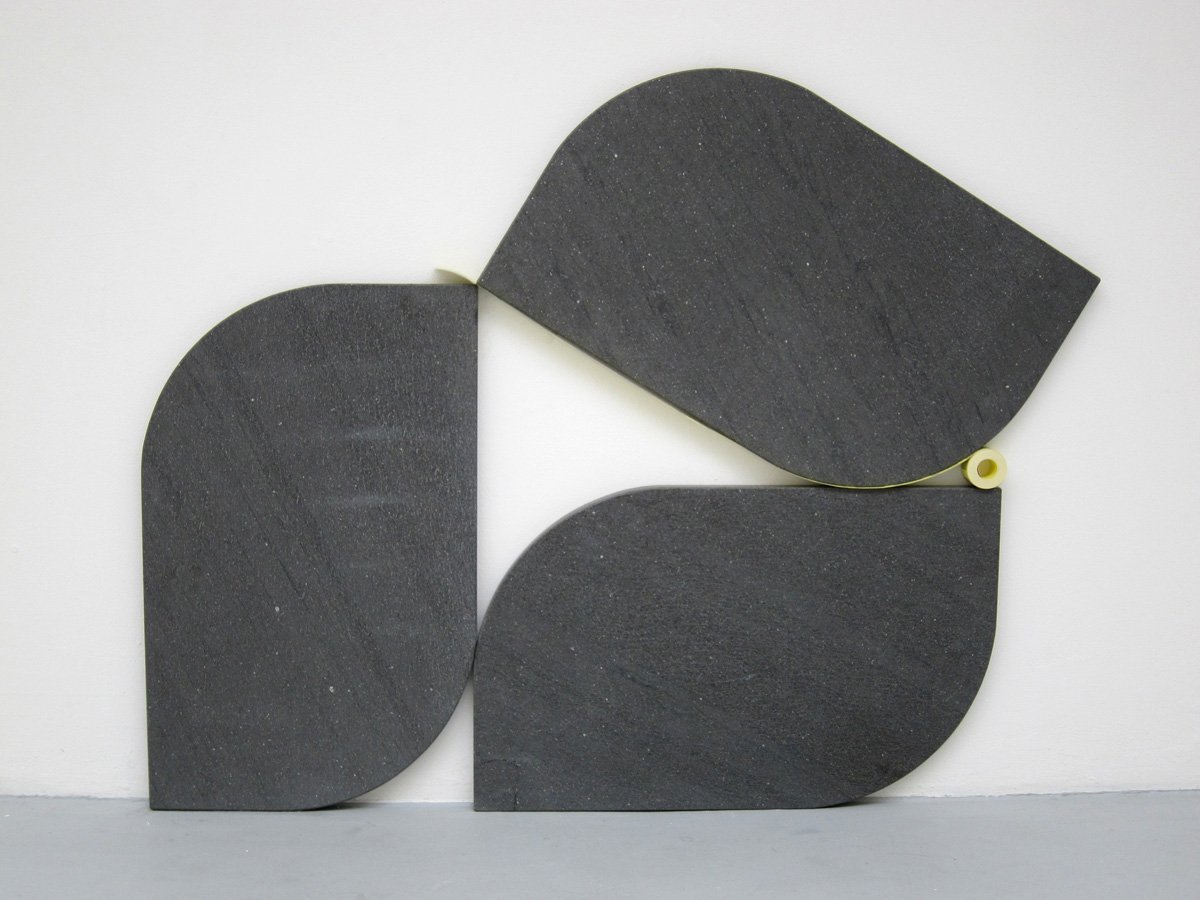I can’t believe we are still protesting
2021 - Photography (Photography)
60.01 x 42.86 cm
Wong Wai Yin
Drawn from the widely circulated images of protests around the world in support of women rights and racial equality, the phrase I can’t believe we are still protesting is both the title of Wong Wai Yin’s photographic series and a reference to similar messages seen on protest signages. The artist used found images from the internet, including a viral photo of an elderly woman who took part in the 2016 “Black Monday” strike against a proposed anti-abortion law in Poland, and another image taken the same year of a group of protestors in the United Kingdom, rallying for the Black Lives Matter movement. Drawing parallels with Hank Willis Thomas’s I Am a Man (2013) painting in the KADIST Collection, Wong employs the visual language and terminology of mass media, specifically borrowing images from protests on civil rights issues. Wong added an additional image filter to these low resolution photos sourced online, turning them into black-and-white images and making them appear more grainy and pixelated. Although the original images were photographs taken within this decade, the aesthetic treatment from the artist gives an illusion of archival imagery, making the timeline of these now historical images ambiguous. Protests and social movements organized around women’s rights and the fight against anti-Black violence have not been as prevalent in Hong Kong compared to other countries, but Wong found the spirit of these protests analogous to the continued political unrest in the city she resides and her struggles as a woman artist. Reminiscent of John Baldessari’s infamous technique of concealing faces in appropriated images with colored adhesive dots, the faces of protestors in Wong’s photographs are also obscured with various graphic shapes in different colours. For the artist, this distinct visual language points to the critical measure Hong Kong protestors have been using to avoid surveillance, in light of the National Security Law instated amidst recent social unrest – their faces must be visually blurred to avoid revealing their identities.
Wong Wai Yin is an interdisciplinary artist who experiments with a variety of media ranging from painting, sculpture, collage, performance, video, installations and photography. Taking fragments of her daily life as a point of departure, Wong has transformed these familiar and seemingly humdrum activities into something wanton, witty, and whimsical. By treating the ordinary work with unsurprising indifference, yet interwoven with humour that is playful, irresponsible, and capricious, her work blurs the presumed boundaries between gallery-exhibited art and daily life. Her performance or action-based video works in particular are reminiscent of the conceptual art of the 1960s that questioned the process of making art with elements of chance. Wong’s early artistic training in Hong Kong was focused on traditional Western European studio practices and mediums but she has since been trying to unlearn these conventional means of art making. She has since shifted to a performative and conceptual approach in her work that often stems from autobiographical experiences, episodic memories and playful interventions with art history.
Colors:
Related works featuring themes of: » Collage, » Collective History, » Consumerism, » Contemporary Conceptualism

© » KADIST
Bjorn Copeland
2009Sign #1 , Sign #2 , Sign #3 were included in “Found Object Assembly”, Copeland’s 2009 solo show at Jack Hanley Gallery, San Francisco...

© » KADIST
Stephen G. Rhodes
2010For his series of digital collages Excerpt (Sealed)… Rhodes appropriated multiple images from mass media and then sprayed an X on top of their glass and frame...

© » KADIST
Kwan Sheung Chi
2012Kwan Sheung Chi’s work One Million is a video work depicting the counting of bills...

© » KADIST
Mario Garcia Torres
2005Mario Garcia Torres films a game of Charades among professional actors guessing the former North Korean dictator’s favorite Hollywood films...

© » KADIST
Julio Cesar Morales
2006Julio Cesar Morales’s watercolor drawings, Undocumented Intervention , show a variety of surprising hiding places assumed by people trying to cross into the United States without documentation...

© » KADIST
Kori Newkirk
2013LAB (2013) conjures the body as the trace of a sooty hand appears, spectrally, on a crumpled paper towel...

© » KADIST
Gabriel Kuri
2010Gabriel Kuri has created a series of works in which he juxtaposes perennial and ephemeral materials...

© » KADIST
Ho Tzu Nyen
2011The Cloud of Unknowing (2011) is titled after a 14th-century medieval treatise on faith, in which “the cloud of unknowing” that stands between the aspirant and God can only be evoked by the senses, rather than the rational mind...

© » KADIST
Julio Cesar Morales
2011Contrabando is a work that references the larger sociological phenomenon in which immigrant economic strategies come to infiltrate urban landscapes...

© » KADIST
Adrian Wong
2012Untitled (Grate I/II: Shan Mei Playground/ Grand Fortune Mansion) is part of a series drawn from architectural objects that mark the boundary of public and private spaces Wong encountered while strolling in Hong Kong...

© » KADIST
Carlos Amorales
2006This work, a large oil painting on canvas, shows a moment from Amorales’s eight-minute two-channel video projection Useless Wonder (2006)...

© » KADIST
Carlos Amorales
2007This work, a large oil painting on canvas, shows a moment from Amorales’s eight-minute two-channel video projection Useless Wonder (2006)...

© » KADIST
Mario Garcia Torres
Mario Garcia Torres discovered the work of artist Oscar Neuestern in an article published in ARTnews in 1969...







